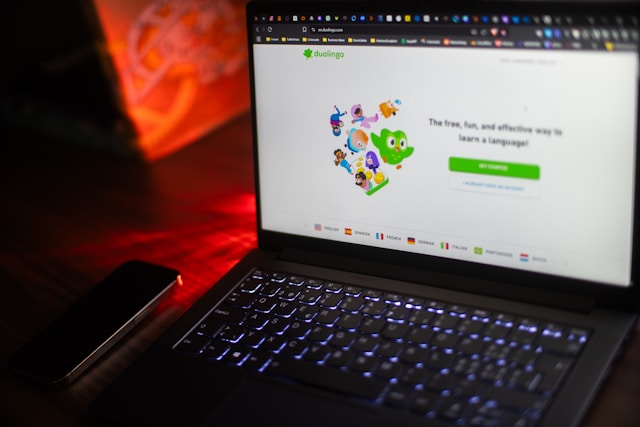In a world that is increasingly connected, communication across different languages has never been more important. From global businesses closing international deals to travelers navigating foreign cities, the need for accurate, instant translation is greater than ever. Thanks to artificial intelligence, AI-powered language translators are transforming the way people communicate, offering faster, more natural, and more reliable results than traditional methods.
This article compares the best AI translation tools of 2025, highlighting their features, accuracy, and use cases to help you choose the right solution for your needs.
Why Use AI Translation Tools?
Machine translation has evolved dramatically in recent years. Unlike older software that often delivered word-for-word results, modern AI translators understand context, tone, and natural phrasing. This makes them far more effective for real-world conversations.
Benefits of AI-powered language translators include:
-
Speed and efficiency – Instant translations for text, voice, and even images.
-
Affordability – Many online AI language translators are free or low-cost.
-
Accessibility – Support for dozens or even hundreds of languages.
-
Real-time communication – Ideal for business meetings, customer service, and travel.
Of course, AI is not perfect. While it excels in everyday use, professional settings like legal or medical translations may still require human expertise. That said, the gap between machine translation vs human translation continues to narrow with each technological breakthrough.
Key Features to Look for in AI Translators
Not all translation tools are created equal. When evaluating AI translation software for business, travel, or education, consider these features:
-
Accuracy and natural tone – Does the tool understand idioms and context?
-
Number of supported languages – Critical for international communication.
-
Real-time translation – Especially important for voice conversations.
-
App integration – Works across messaging apps, business platforms, and devices.
-
Offline mode – Essential for travelers without reliable internet access.
AI-Powered Language Translators Compared: Top Picks for 2025
Here’s a breakdown of the most widely used and trusted AI translators available today:
1. Google Translate
-
Strengths: Supports over 130 languages, integrates seamlessly with Android, Chrome, and Google Lens.
-
Best for: Travelers and casual users needing fast, free translations.
-
Features: Text, voice, camera, and real-time conversation translation.
2. DeepL Translator
-
Strengths: Highly praised for accuracy and natural-sounding phrasing, especially with European languages.
-
Best for: Professionals and students who want reliable text translations.
-
Features: Web and desktop apps, document translation, premium options for businesses.
3. Microsoft Translator
-
Strengths: Strong enterprise support, integrates with Microsoft Teams and Office 365.
-
Best for: Businesses conducting multilingual meetings or customer interactions.
-
Features: Real-time conversation translation, cross-device syncing, multiple speaker support.
4. iTranslate
-
Strengths: Designed for travelers with strong offline capabilities.
-
Best for: Tourists and mobile users.
-
Features: Voice-to-voice translations, offline dictionary, wearable integration.
5. ChatGPT and OpenAI Translators
-
Strengths: Context-aware translations that go beyond literal meaning. Ideal for nuanced or conversational texts.
-
Best for: Businesses and professionals who need more human-like translations.
-
Features: Can adapt translations to tone, style, and cultural context.
6. Emerging Tools (Lingvanex, Papago, etc.)
-
Strengths: Expanding rapidly with niche features such as image-to-text translation and integration with smart devices.
-
Best for: Users exploring alternatives to mainstream tools.
Comparison Table
| Translator | Accuracy | Languages Supported | Real-Time Features | Best For | Pricing |
|---|---|---|---|---|---|
| Google Translate | Good | 130+ | Yes | Travel, casual use | Free |
| DeepL Translator | Excellent | 30+ | Limited | Professional, academic | Free + Pro |
| Microsoft Translator | Very Good | 100+ | Yes | Business, enterprise | Free |
| iTranslate | Good | 100+ | Yes | Travel, offline use | Paid plans |
| ChatGPT/OpenAI | Excellent (contextual) | Dozens | Yes | Conversational use | Subscription |
| Lingvanex/Papago | Varies | 100+ | Yes | Alternatives/tech use | Varies |
Best AI Translation Tools by Use Case
-
For Travelers: Google Translate and iTranslate (offline support and quick translations).
-
For Businesses: Microsoft Translator and ChatGPT-powered tools (enterprise-ready and context-aware).
-
For Students & Learners: DeepL Translator (high accuracy and natural text).
-
For Professional/Enterprise Use: Hybrid solutions combining AI with human translation for legal, medical, or technical industries.
The Future of AI Translation
The next generation of AI translators is expected to push boundaries even further. Upcoming trends include:
-
Contextual and cultural awareness – Making translations feel even more natural.
-
Integration with AR and VR – Instant translations in immersive environments.
-
Wearable devices – Real-time translation built into smart glasses or earbuds.
-
Hybrid AI + human translation – Combining the speed of machines with human expertise for maximum accuracy.
AI translation software is becoming more sophisticated, making global communication seamless and accessible for everyone.
Conclusion
AI-powered language translators have evolved from simple phrase tools into powerful, context-aware systems capable of bridging language barriers in real time. Whether you’re a traveler needing quick translations, a student learning a new language, or a business professional engaging with international clients, there’s an AI translator designed for your needs.

